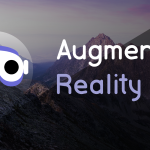
Sustainability-Driven UX: Designing Eco-Friendly Interfaces for a Greener Future
- Post
- August 7, 2023
- UI/UX Design, UX Design, Web Design
- 0 Comments
In today’s fast-paced digital world, where user experience (UX) holds paramount importance, a new design approach has emerged that aligns technology with environmental responsibility – Sustainability-Driven UX. As technology intertwines with our daily lives, the impact it has on the environment cannot be ignored. In this comprehensive guide, we delve into the principles and strategies behind crafting eco-friendly interfaces that not only enhance user engagement but also contribute to a greener future.
The Synergy of Sustainability and User-Centric Design
In the realm of UX design, creating interfaces that prioritize user needs while minimizing ecological footprints is a formidable challenge. Sustainability-Driven UX entails a fusion of intuitive design principles and eco-consciousness. It transcends aesthetics and navigability, integrating environmental considerations seamlessly into the design process. This approach goes beyond visual appeal; it’s about crafting an experience that resonates with users while fostering sustainable behaviors.
The Core Tenets of Sustainability-Driven UX
Material Selection and Lifecycle Assessment
When conceiving digital interfaces, the choice of materials plays a pivotal role. Sustainable UX entails evaluating the environmental impact of each design element, from graphics to code. Designers must employ life cycle assessment (LCA) techniques to identify the carbon footprint and resource consumption associated with different design components. By selecting materials with lower environmental impact, UX professionals can contribute to a more sustainable digital landscape.
Efficient Interaction Patterns
Streamlined interaction patterns are essential for creating eco-friendly interfaces. Minimizing unnecessary animations, reducing data consumption, and optimizing loading times not only enhance user experience but also conserve energy. By prioritizing efficiency, designers can reduce the overall energy consumption of digital products, thereby promoting sustainability.
Inclusive and Accessible Design
Sustainability-Driven UX goes hand in hand with inclusivity. Designing for all users, including those with disabilities, not only upholds ethical standards but also aligns with sustainability goals. Inclusive design ensures that digital interfaces cater to diverse user needs, fostering a more equitable and sustainable digital ecosystem.
Behavioral Nudges for Sustainable Actions
Strategic use of behavioral psychology can encourage users to adopt eco-friendly behaviors. Through subtle cues and prompts, designers can nudge users towards sustainable actions, such as opting for energy-saving modes or reducing digital waste. These micro-interactions contribute to a more conscious and environmentally friendly user experience.
The UX Design Process Through a Sustainable Lens
Crafting eco-friendly interfaces necessitates a mindful UX design process. By integrating sustainability principles into each stage, designers can create products that resonate with users while minimizing ecological impact.
Research and Empathy
Understanding user needs and aspirations is the foundation of any UX project. With sustainability in mind, designers can explore how digital interactions intersect with environmental consciousness. By empathizing with users’ desire for eco-friendly choices, designers can develop interfaces that facilitate sustainable actions.
Conceptualization and Ideation
During the ideation phase, creative minds can brainstorm ways to infuse sustainability into interface design. This may involve exploring novel interaction patterns that promote energy conservation or envisioning interfaces that inspire users to adopt eco-conscious behaviors.
Prototyping and Testing
Prototyping allows designers to materialize their ideas and gather user feedback. Sustainable UX prototypes should reflect eco-friendly design choices, such as minimalistic graphics, intuitive navigation, and energy-efficient interactions. Testing these prototypes with users ensures that the design not only meets sustainability goals but also enhances user satisfaction.
Implementation and Optimization
When translating prototypes into functional interfaces, designers must prioritize efficiency and environmental responsibility. This includes optimizing code for faster loading times, utilizing clean and compact design elements, and integrating energy-saving features that empower users to make sustainable choices.
Inspiring Eco-Friendly UX Design Examples
Green E-Commerce Platforms: E-commerce websites like Patagonia emphasize product longevity, encouraging users to make mindful purchases that align with sustainability values.
Energy-Efficient Apps: Apps like JouleBug gamify energy conservation, rewarding users for adopting eco-friendly habits in their daily routines.
Carbon-Footprint Calculators: Interfaces like CarbonStory provide users with insights into their carbon footprint, fostering awareness and encouraging sustainable lifestyle changes.
Unlocking the Potential of Sustainable UX
Sustainability-Driven UX holds immense potential to shape a greener future. By amalgamating cutting-edge design practices with environmental awareness, designers can pave the way for a digital landscape that harmonizes technology with sustainability.
Final Words
Sustainability-Driven UX is more than a design trend; it’s a paradigm shift that harmonizes user experience with ecological consciousness. By meticulously selecting materials, prioritizing efficiency, and inspiring sustainable behaviors, designers can create interfaces that empower users to contribute to a greener, more sustainable future.
Commonly Asked Questions
Q1: How can UX designers integrate sustainability into their workflow?
A: UX designers can integrate sustainability by evaluating material choices, optimizing interactions for efficiency, and incorporating behavioral nudges that promote eco-friendly actions.
Q2: What role does inclusivity play in Sustainability-Driven UX?
A: Inclusivity ensures that digital interfaces cater to diverse user needs, promoting equitable access and sustainable design.
Q3: Can you provide examples of sustainable UX design in real-world applications?
A: Certainly! Examples include e-commerce platforms emphasizing longevity, energy-efficient apps, and carbon-footprint calculators that encourage sustainable actions.
Q4: How does Sustainability-Driven UX contribute to a greener future?
A: Sustainability-Driven UX creates interfaces that empower users to adopt eco-friendly behaviors, collectively contributing to a more sustainable digital landscape.
Q5: What is the significance of behavioral nudges in sustainable design?
A: Behavioral nudges leverage psychology to encourage users to make sustainable choices, fostering a more conscious and environmentally friendly user experience.




